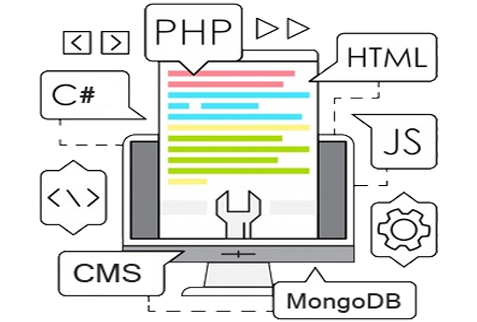Our Expertise
Application Development
Integrity’s Application Development operates with the concept of partnering with the customer.
Website Designing
Integrity’s Website Designing works with an aim for more responsive, scalable and faster web designs.
GIS APPLICATION DEVELOPMENT
Integrity’s GIS application Development helps users to maintain, store, present and analyze geographic and spatial data.
Search Engine Optimization
Integrity practices SEO and optimizes the content of website to increase level of traffic and more organic search results.
MOBILE APP DEVELOPMENT
Integrity’s Mobile App development service is fuel to your idea. We build mobile apps for everyday business.
MAILING SOLUTION
Integrity’s Mailing Solution is the answer for hustle free domain registration. And domain-based emails are more impactful.
About us.
INTEGRITY, founded in 2014, is a software development company, based in Mumbai (India). We are designers and developers. We deal in customized software solutions. And cover a huge variety of software applications & solutions, also, including e-commerce platforms, web hosting, domain registration, web applications, graphics & logo designing, digital marketing. Our primary focus is on delivering software solutions for all kinds of platforms. Customized software applications & solutions have helped many industries achieve their target with an impact. Web development is another key sector of Integrity. The web designs build here are responsive, scalable and robust. The layouts are attractive and the content is of supreme quality. Read More...
Desktop Application Development
We are a full service ecommerce website design & development company in India, with years of experience working with different genre of clients. Trusted web development service providers for high quality results at competitive prices.

Desktop virtualization is software technology that separates the desktop environment and associated application software from the physical client device that is used to access it.
Desktop virtualization can be used in conjunction with application virtualization and user profile management systems, now termed "user virtualization," to provide a comprehensive desktop environment management system. In this mode, all the components of the desktop are virtualized, which allows for a highly flexible and much more secure desktop delivery model. In addition, this approach supports a more complete desktop disaster recovery strategy as all components are essentially saved in the data center and backed up through traditional redundant maintenance systems.
Remote desktop virtualization
Presentation virtualization
Remote Desktop Services (formerly called "Terminal Services") is a server-based computing/presentation virtualization component of Microsoft Windows that allows a user to access applications and data on a remote computer over a network using a remote-display protocol called RDP. Another example of presentation virtualization is Citrix XenApp.
Application virtualization
Application virtualization improves delivery and compatibility of applications by encapsulating them from the underlying operating system on which they are executed. A fully virtualized application is not installed on hardware, in the traditional sense. Instead, a hypervisor layer intercepts the application which at runtime acts as if it is interfacing with the original operating system and all the resources managed by it, when in reality it is not.
User virtualization
User virtualization separates all of the software aspects that define a user’s personality on a device from the operating system and applications to be managed independently and applied to a desktop as needed without the need for scripting, group policies, or use of roaming profiles. The term "user virtualization" sounds misleading; this technology is not limited to virtual desktops. User virtualization can be used regardless of platform – physical, virtual, cloud, etc. The major desktop virtualization platform vendors, Citrix, Microsoft and VMware, all offer a form of basic user virtualization in their platforms.
Layering
Desktop layering is a method of desktop virtualization that divides a disk image into logical parts to be managed individually. For example, if all members of a user group use the same OS, then the core OS only needs to be backed up once for the entire environment who share this layer. Layering can be applied to local physical disk images, client-based virtual machines, or host-based desktops. Windows operating systems are not designed for layering, therefore each vendor must engineer their own proprietary solution.